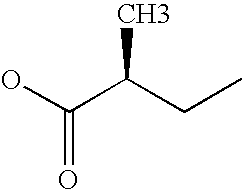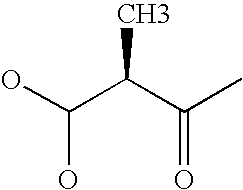Food product suitable for reducing low density lipoprotein cholesterol levels
a low-density lipoprotein, food-grade technology, applied in the field of food products, can solve the problems of red color of products that cannot be avoided, many process steps increase costs, and disadvantages of food products used in the majority of the world, and achieve the effect of increasing health effects
- Summary
- Abstract
- Description
- Claims
- Application Information
AI Technical Summary
Benefits of technology
Problems solved by technology
Method used
Image
Examples
example 1
A. Preparation of Monascus Strain F125 M1-4
Monascus ruber strain F125 was cultivated in malt water liquid medium at 30° C. for 4 days. Of this culture, 1 ml was used as an inoculum for a Hybond-N filter (Amersham, UK) placed on a YE plate (4% glucose, 0.3% KH2PO4, 1.0% yeast extract (Difco), 1.5% agar). After 3 days incubation at 30° C., the spores were harvested by washing the filters with 10 ml physiological saline containing 0.1% Tween 80. The spores were filtered 4 times through Mira cloth filters to obtain a hyphae free spore suspension. This suspension was used for subsequent mutagenesis.
The spores were diluted to a concentration of 108 spore / ml then exposed to UV light at an intensity of 100 joules / m2. The mutagenised spores were plated on Potato Dextrose Agar (Oxoid) and incubated for 3 weeks. One of the resulting colonies, which had a lighter colour than the others was selected and is herein defined as Monascus strain F125 M1-4.
The strain F125 M1-4 was deposited at the Cent...
example 2
Steps A, B and D. were done according to example 1.
C. Fermentation
C.1. Preparation of an Inoculum
A shake flask containing dehulled soybeans is inoculated with filamentous spores suspended in a physiological water solution containing 0.1 wt % Tween 80 (polyoxyethylene sorbitan fatty acid ester, available from ICI Specialty Chemicals™). This shake flask is incubated to let the mould grow. This results in a Monascus spore suspension, which was adjusted by dilution to a concentration of 1*106 spores / ml.
C.2. Preparation of Fermentation Medium
1 kg of dehulled soybeans were soaked in tap water (50° C.) for 30 minutes and subsequently air dried for two hours. Subsequently 50 g batches of the dried dehulled beans were brought in to 300 ml Erlenmeyer flasks.
C.3. Fermentation
The shake flasks were each inoculated with 1 ml of the prepared Monascus spore suspension and incubated for 30 days at 30° C. A sample from the shake flask was taken every week to monitor the statin production.
After fermen...
PUM
| Property | Measurement | Unit |
|---|---|---|
| Fraction | aaaaa | aaaaa |
| Dimensionless property | aaaaa | aaaaa |
| Dimensionless property | aaaaa | aaaaa |
Abstract
Description
Claims
Application Information
 Login to View More
Login to View More - R&D
- Intellectual Property
- Life Sciences
- Materials
- Tech Scout
- Unparalleled Data Quality
- Higher Quality Content
- 60% Fewer Hallucinations
Browse by: Latest US Patents, China's latest patents, Technical Efficacy Thesaurus, Application Domain, Technology Topic, Popular Technical Reports.
© 2025 PatSnap. All rights reserved.Legal|Privacy policy|Modern Slavery Act Transparency Statement|Sitemap|About US| Contact US: help@patsnap.com



